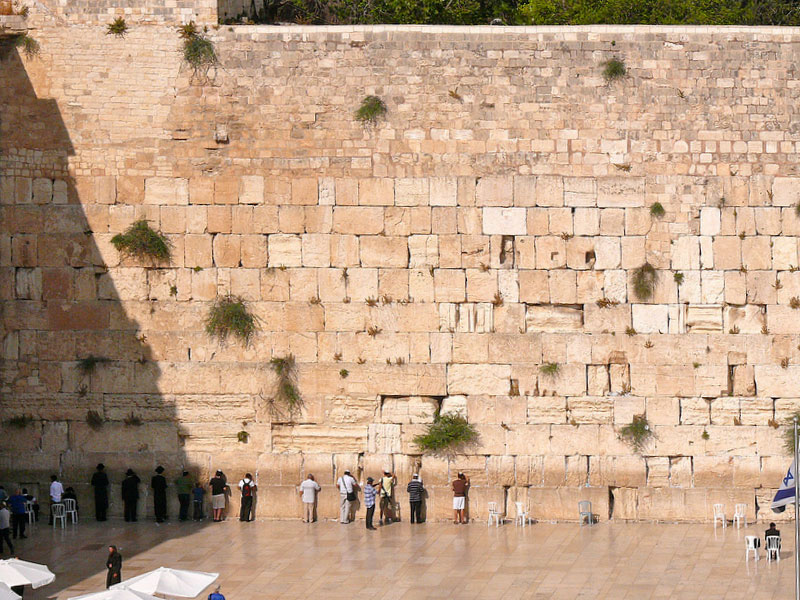
The Second Temple courtyard, also known as the Wailing Wall, the Kotel, or the Western Wall. Photo © Des Runyan, licensed Creative Commons Attribution.
No visitor to Jerusalem can escape hearing references to the First Temple and the Second Temple, which refer to historical time periods when two different massive Jewish temples stood approximately where Al Aqsa Mosque is now located. Both temples were destroyed, and the main remnant is the outer western wall of the Second Temple courtyard, where people flock from all over the world to pray (known as the Wailing Wall, the Kotel, or the Western Wall). According to Jewish traditions, both temples were destroyed on the 9th of Av on the Jewish calendar.According to Jewish traditions, both temples were destroyed on the 9th of Av on the Jewish calendar. Every year, those destructions are marked by the day of mourning called Tisha B’av. There are several other tragic dates in Jewish history associated with Tisha B’av. But, because of its relation to the destruction of the temples, the plaza of the Western Wall is filled with throngs of Jewish mourners every Tisha B’av (in August).During the First Temple period (1200-586 BC), the First Temple was built in 1000 BC by King Solomon after King David conquered Jerusalem and made it his capital. The Temple was destroyed in 586 BC by Nebuchadnezzar, the King of Babylon, when he conquered Jerusalem. There are scant remains of the temple on the south hill of the City of David. Evidence of the conquering and destruction of the city can be found in the Burnt House and the House of the Bullae.
From the First Temple period, in 701 BC, there are significant remains of preparations made by King Hezekiah when a siege on the city by Sennacherib King of Assyria was imminent. Those remains include Hezekiah’s Tunnel and the Broad Wall in the Jewish Quarter.
The beginning of the Second Temple period (586 BC-AD 70) is marked by the return of Jews to Jerusalem from their exile in Babylon in 538 BC. They were allowed to return under an edict issued by Cyrus King of Persia. By 515 BC the reinstated Jewish residents had completed building the Second Temple.
The time of the Second Temple is divided into different periods: the Persian period (586-332 BC); the Hellenistic period (332-63 BC); and the Roman period (63 BC-AD 324). In 37 BC, King Herod enlarged the Temple Mount and rebuilt the temple with the consent of the public. During the Roman period, in AD 70, the Second Temple was destroyed, along with Jerusalem, by Titus’ army. It was also during this period that Jesus was in Jerusalem. He was crucified about 40 years before the destruction of the city.
There are significant archaeological remains from the Second Temple period, including the Kidron Valley tombs, the Western Wall, Robinson’s Arch, the Herodian residential quarter, numerous other tombs, and walls.
BCE (Before Common Era) and CE (Common Era) are used throughout Israel and are numerically equivalent to BC and AD, respectively.
Excerpted from the First Edition of Moon Jerusalem & the Holy Land.